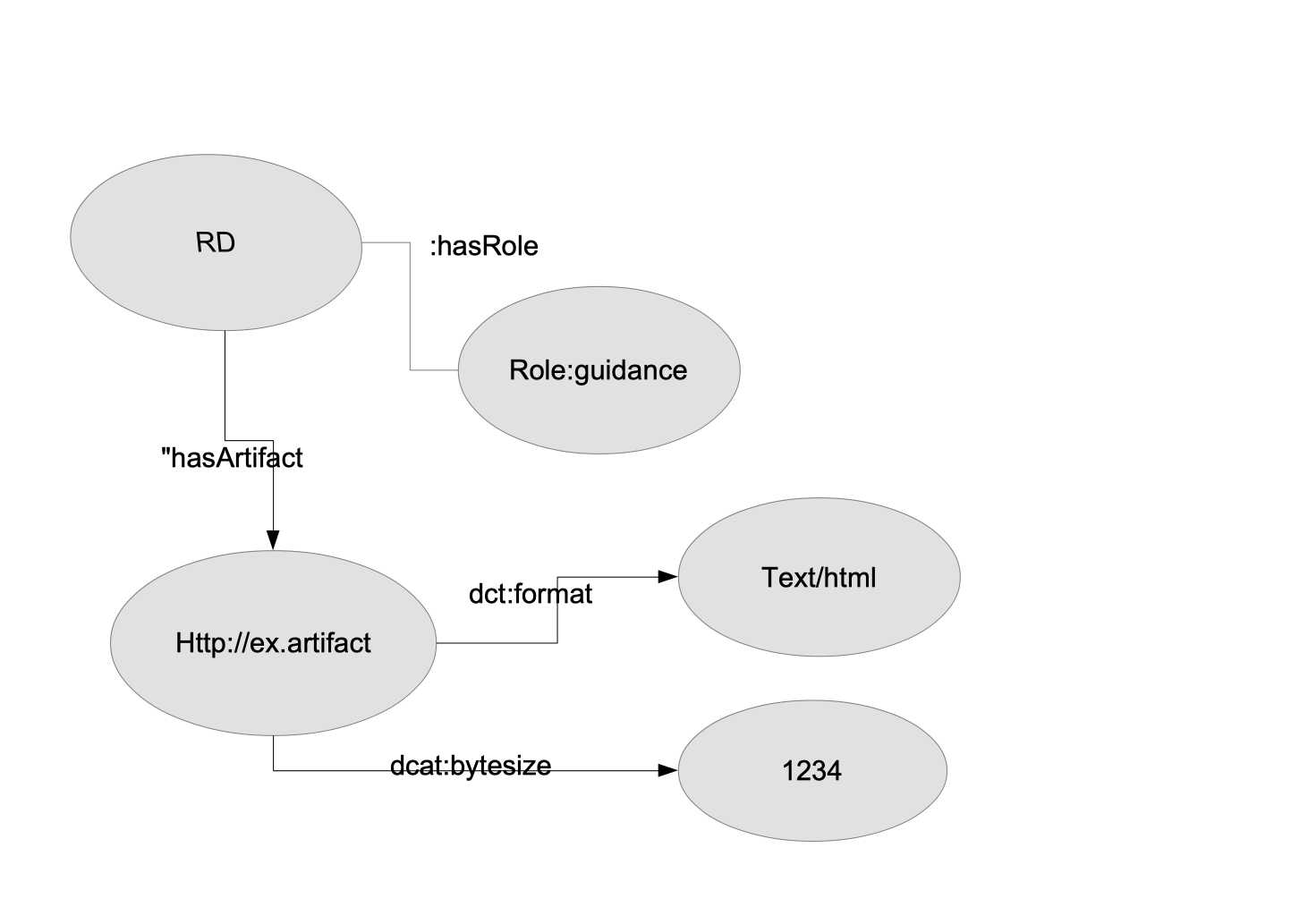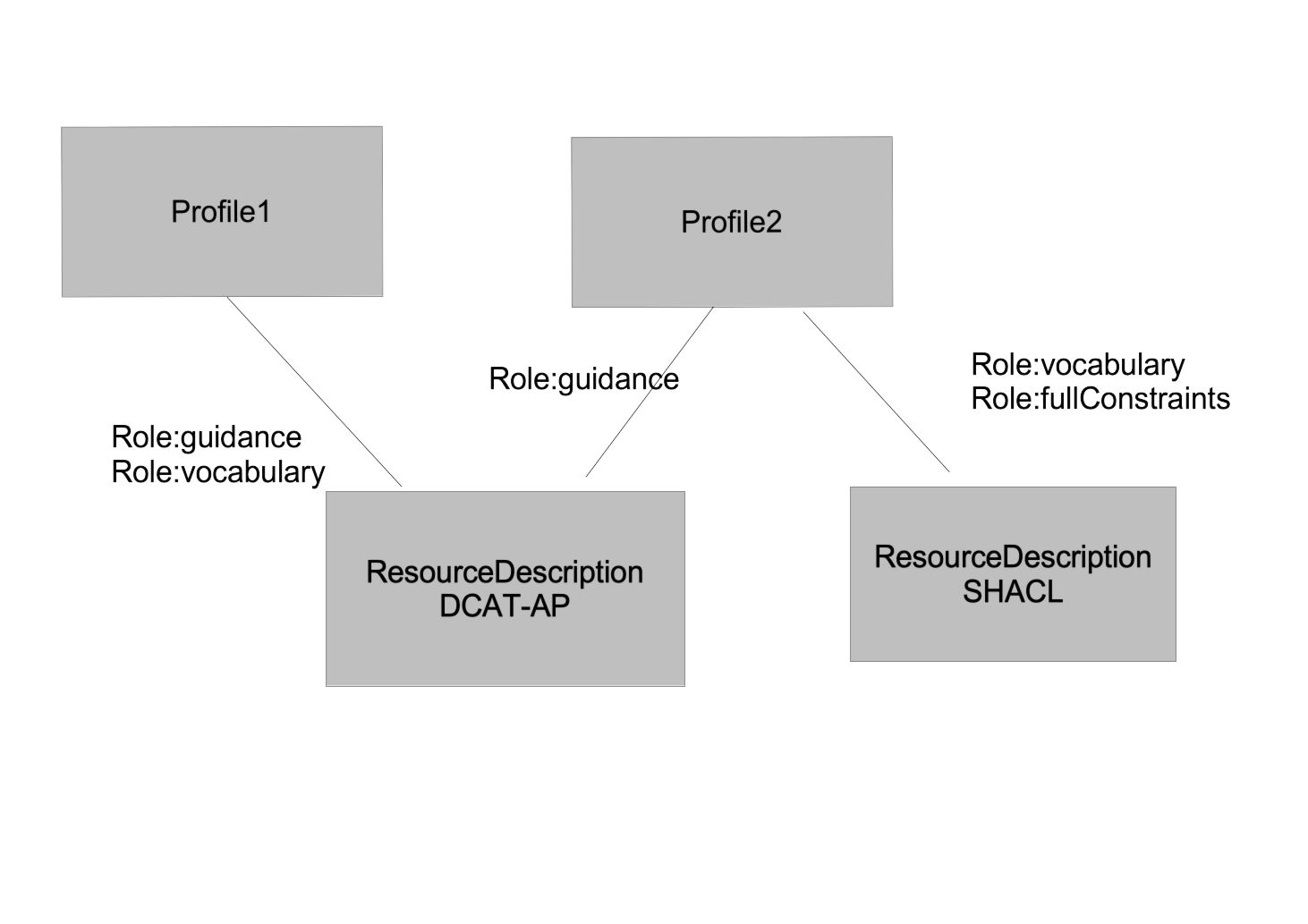No they are not misplaced - this is a qualified relationship.
specific relationships are an alternative pattern, but not appropriate because
a) we need other qualifications beside role (what the artefact is (its profile), how it is encoded, what parent it may have been inherited from) b) we dont want to manage updates to an ontology - either let users define roles or provide a register mechanism. c) the killer - an artefact may be used for defintion and validation and form building and documentation...
(we can still define a small number of obvious roles relating to our Use Cases - the issue then is whether this should be in the ontology or a separate register artefact)
 and
and
 It's a question of associating the information about the artifact (which is a file on the web) with the artifact. If there is no artifact, those properties would not exist. I also think that this illustrates the idea of the "record" (upper picture) with that of graphs (lower). Records act as proxies while graphs describe things and relationships. In the second diagram, the resource descriptor describes the content of the resource and its role (also title, etc.), while the artifact graph describes the physical artifact. The content and the artifact are different things and each has properties that describe it.
It's a question of associating the information about the artifact (which is a file on the web) with the artifact. If there is no artifact, those properties would not exist. I also think that this illustrates the idea of the "record" (upper picture) with that of graphs (lower). Records act as proxies while graphs describe things and relationships. In the second diagram, the resource descriptor describes the content of the resource and its role (also title, etc.), while the artifact graph describes the physical artifact. The content and the artifact are different things and each has properties that describe it.
If the PROF resourceDescription is analogous to the DCAT distribution, it is a description of a physical resource, essentially a file. The PROF role is the relationship between a profile and a resource. It is not the nature of the resource, and the resource can have different roles in association with different profiles. I can only think to illustrate this with a (crude) diagram: Also note that with inheritance of resourceDescriptions, that inheritance implicitly includes the role, which may not be appropriate.
Also note that with inheritance of resourceDescriptions, that inheritance implicitly includes the role, which may not be appropriate.
Among the possible solutions are: